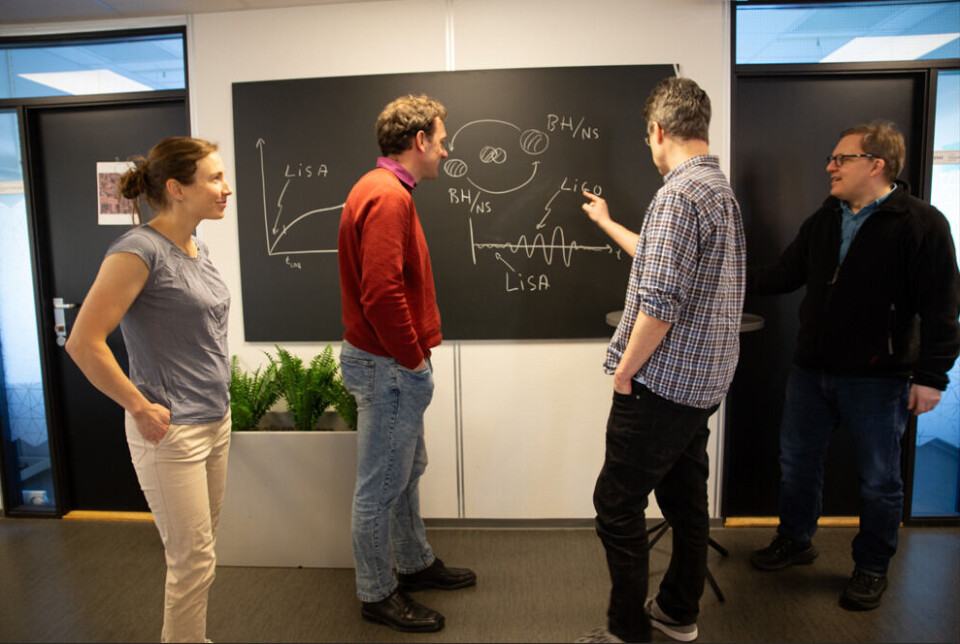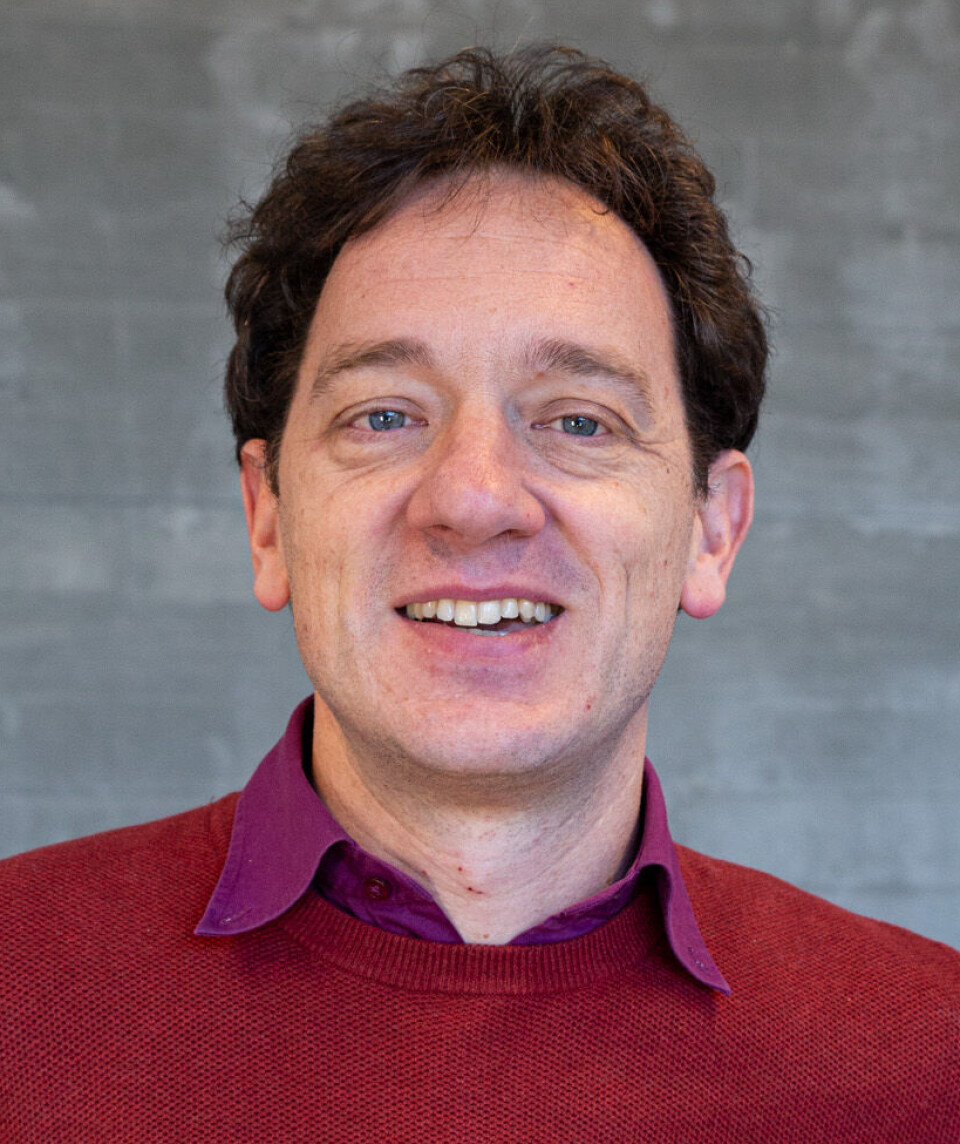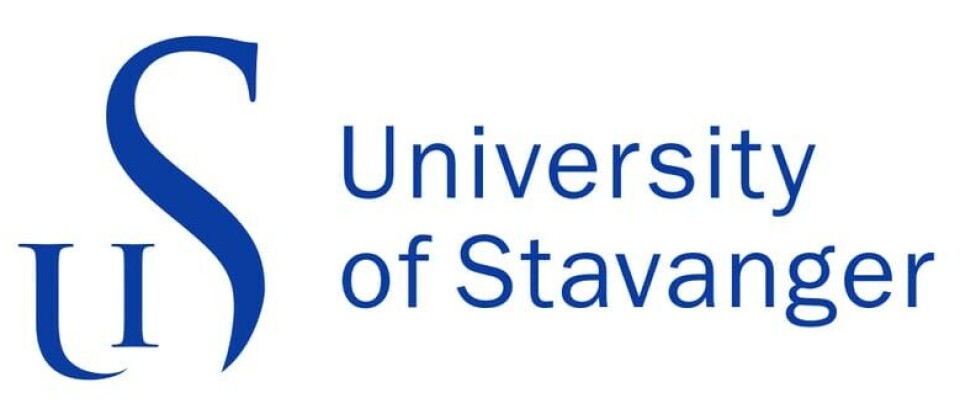THIS CONTENT IS BROUGHT TO YOU BY the University of Stavanger - read more

Norwegian researchers can contribute to changing the Big Bang theory
They will use instruments in space to observe gravitational waves. The results could provide more insights into the laws of physics and the origin of the universe.
In 2017, American researchers were awarded the Nobel Prize for observing gravitational waves from Earth. Now, Norwegian physicists are participating in an experiment aimed at observing these waves from space.
Launch set for 2035
Recently, clearance was given for the launch of a giant laser instrument into orbit around the Sun to detect and study gravitational waves from space. The launch is set for 2035, and Norwegian researchers are part of the project aimed at advancing our understanding of physics.
Gravitational waves are waves generated by accelerating mass. They provide information about the most extreme events in the universe. The waves could originate from the collision of two black holes or the explosion of a star. The explosive and rapid expansion of the universe after the Big Bang initiated gravitational waves that are still propagating today.
The European Space Agency (ESA) has recently greenlit the Laser Interferometer Space Antenna (LISA) mission, which will observe and measure longer wavelengths than possible from Earth.

Work will commence in January 2025, and will involve launching three instruments into space. They will orbit the Sun and emit laser beams towards each other in a massive triangular formation. Each side of the triangle will span 2.5 million kilometres, over six times the distance from Earth to the Moon.
The laser beams will measure waves in space.
“LISA's detector will provide us with deeper insights into various astrophysical and cosmological events throughout the universe's history,” says Germano Nardini.
He is an associate professor at the University of Stavanger and leader of the Norwegian contribution to LISA. The other Norwegian researchers are from the University of Oslo, the University of Bergen, Norwegian University of Science and Technology, and the University of Stavanger.
Three decades of research
On January 25th, ESA announced on its website that the countdown to the launch of the world's largest interferometer in 2035 had begun.
“This is a significant milestone. Three decades of scientific and technological research, including contributions from Norway, have made this possible,” says Nardini.
So far, all experiments aimed at detecting gravitational waves have been conducted from Earth. Member countries of the LISA project, including Norway, are responsible for building the instruments, spacecraft, and ground segment for LISA.
The instruments to be built will measure gravitational waves in the millihertz range, an area inaccessible from ground level but where many astrophysical objects are believed to emit radiation, such as black holes and neutron stars.
Will capture waves for four years
For four years, the instrument will capture waves and radiation in space. Researchers believe it's possible to capture weak gravitational waves from other galaxies and from the early infancy of the universe around 14 billion years ago. They have high hopes for new insights and discoveries.
By examining weak gravitational waves that radiate uniformly through the cosmos, researchers can verify or falsify phenomena related to the first seconds of the universe. Phenomena that we today only have theories about.
In the early formation of the universe, several phase transitions occurred, meaning something changed from one phase to another, such as water turning into gas. In cosmological studies, phenomena such as quarks and the Higgs particle have been linked to phase transitions in the universe shortly after the Big Bang.

These phase transitions have significant implications for the early development and structure of the universe. Studies of phase transitions associated with quarks and the Higgs particle contribute to a better understanding of the early stages of the universe and the fundamental forces that govern its development.
“Such phase transitions are theoretically expected to produce very specific gravitational wave signals. Now, we might be able to detect and record these, confirming the theories we have about these phenomena,” explains Nardini.
He also believes there will be an opportunity to gain more insight into the secrets of particle physics at higher energies than we can currently reach with today's particle accelerators.
Confirms Einstein's theories
Gravitational waves were predicted by Einstein's theory of relativity. They were first observed in 2015.
“With the LISA project, we can discover entirely unexpected things and new phenomena. If the theory of relativity were to show slightly incorrect results, it could mean that we need to consider alternative theories of gravity, for example,” Anders Tranberg points out.
He is a professor
of theoretical physics at the University of Stavanger, and has contributed to the
LISA project since 2014.
Tranberg is also curious whether hypotheses about the existence of extra dimensions and string theory will be confirmed – phenomena that physicists have been pondering for almost 50 years.
“If the instrument discovers more black holes – small and large – than we expect, we may need to revise elements of our Big Bang theory. If, for example, we do not find any signs of phase transitions, then we have a problem explaining where the universe's antimatter has gone. So, there's plenty to delve into,” he says.
Norwegian technological expertise
It will be a significant task for the international cadre of physicists to sort through the sources, interpret the data, and put them into the right context. Researchers have access to advanced data analysis and large data processing resources.
Specifically, Norwegian technology companies can build components for the spacecraft to be launched into space. The Norwegian LISA consortium contributes by developing parts of the data analysis.
Raw data will be converted directly from the LISA instruments to data that is more immediately usable for researchers. A supercomputer with more than 50 million hours of computing time can examine whether these data have the signals that researchers hope for.
Has hunted gravitational waves for 10 years
“This is also a very significant milestone for us in the LISA group
at the University of Stavanger,” says Tranberg, a veteran of the project.
University of Stavanger researchers Angelo Ricciardone, David Weir, and Tranberg were the only physicists in Norway involved in preparing eLISA, as LISA was previously called. They proved that the technology now being used worked as intended.
For the past 20 years, the hunt for gravitational waves has intensified. Also, in the LIGO project, which in 2016 could announce the first-ever observation of gravitational waves, constant adjustments to instruments were required before success was achieved.
In 2017, the three American pioneers of LIGO finally received the Nobel Prize in Physics for detecting gravitational waves the year before. Alex Nielsen, also a professor of physics at the University of Stavanger, participated in the data analysis of the very first gravitational wave event in September 2015, as part of the LIGO project.
Confirmation or scrapheap
Helena Kolesova is a particle physicist at the University of Stavanger. She is also part of the LISA collaboration where she explores how gravitational waves from the early universe can reveal new physics, such as the nature of dark matter.
When the first data arrives from the immense measuring instrument, all the Norwegian physicists participating in the LISA consortium will be the first to delve into the data.
The theories they work on regarding space and the early beginnings of the universe could either be confirmed or risk being thrown onto the scrapheap of history – and entirely new theories could be formulated and validated.
Translation based on ChatGPT

This content is paid for and presented by the University of Stavanger
This content is created by the University of Stavanger's communication staff, who use this platform to communicate science and share results from research with the public. The University of Stavanger is one of more than 80 owners of ScienceNorway.no. Read more here.
More content from the University of Stavanger:
-
How the Vikings protected themselves from attacks
-
Like tuning forks in space: A final pure tone reveals the mysterious interior of neutron stars
-
Could scented books encourage more kids to read?
-
Artificial intelligence could improve the quality of life for more patients following a stroke
-
Cathedral's lost treasures uncovered
-
Archaeologists may have found a marketplace from the Viking Age
———





































